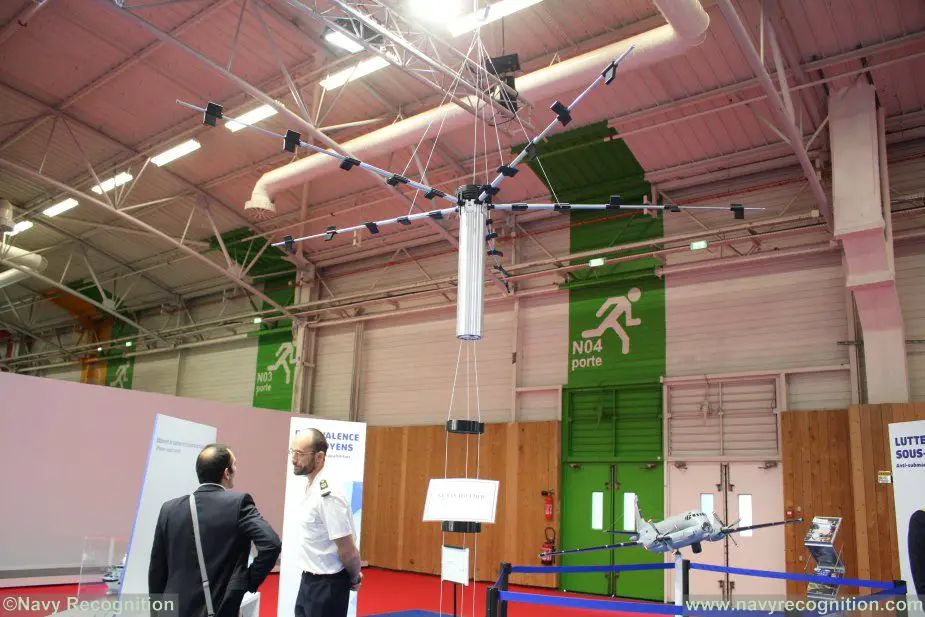Breaking news
Euronaval 2018: Thales lifts veil on SonoFlash high-performance sonobuoy.
At Euronaval 2018 exhibition, being held in Paris (France), Thales lifted veil on the new SonoFlash, a new high-performance sonobuoy for network-centric anti-submarine warfare.
 Thales' new SonoFlash sonobuoy showcased on French Defense Ministry booth at Euronaval 2018
Thales' new SonoFlash sonobuoy showcased on French Defense Ministry booth at Euronaval 2018
Anti-submarine warfare capabilities are increasingly crucial for naval forces throughout the world. SonoFlash is a strategic asset that complements ASW systems currently in service and provides an ideal response to the sovereignty requirements of countries today.
SonoFlash is an active/passive sonobuoy for monostatic and multistatic operations. It can be deployed and operated by any type of aircraft or surface vessel, including unmanned platforms. SonoFlash is interoperable with the Flash dipping sonar and the Captas family of towed-array sonars.
Thales' Sono-Flash is based on Thales Australia's Barra Sonobuoy System. It is a standardized Type A sonobuoy (roughly 1 meter long and 10 centimeters in diameter). The Sono-Flash is being developed with the support of the French Navy and DGA. It will be available for export.
Thales is looking to achieve technological and tactical breakthroughs with this new system: The unique feature of the Sono-Flash is that Thales managed to combined both active and passive capabilities. So far, sonobouys were always mission-specific and limited to one role (active also known as DICASS and passive, known as DIFAR). The Sono-Flash is fitted with a long reception array similar to those found on passive-only sonobuyos, especially the one found on the original Barra sonobuoy: The design of the reception array is based on the Barra's array. Sonobuoys with a single hydrophone have been in use since the end of the Second World War - but with limited effectiveness. The Sono-Flash however features a high transmission power as well for the active part, meaning that in active mode, it can receive the echoes from submarines (no matter how silent they might be).
Another advantage of using a unique, dual mode, sonobuoy is the cost. According to Thales, navies switching to the Sono-Flash will be able to reduce their inventory of active and passive sonobouys by a sensible margin.
Sono-Flash users will be able to conduct multistatic ASW, meaning several transmitters and receivers in different locations (and usually deployed from different platforms) to dramatically increase the coverage area that the friendly force is able to search in: The new sonobuoy frequencies were specificaly designed to be compatible with the Flash dipping sonar. It offer several tactical advantages. For exmaple, the Flash sonar can be used for transmission and the Sono-flash for reception, meaning the tracked submarine will know the position of the dipping sonar but will not know the position of the sonobuoy. Several Sono-Flash can even work with each other to ping in specific patterns (or randomly depending on the mission).


























